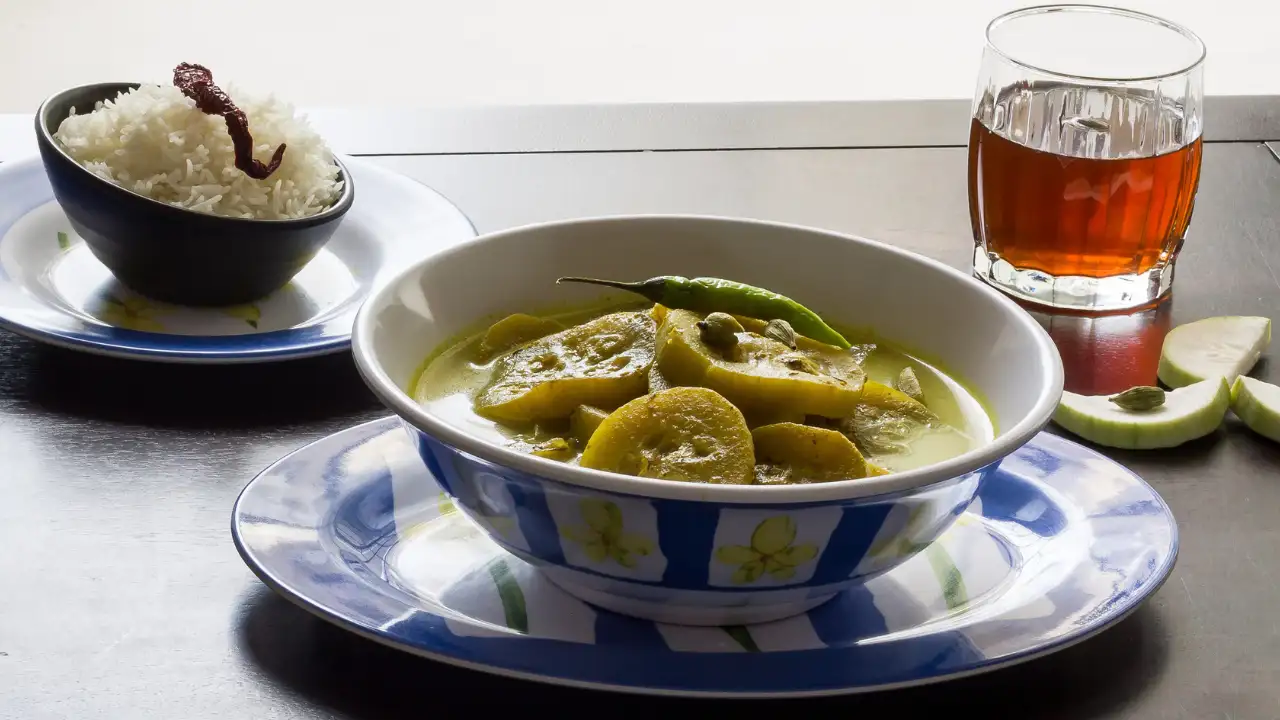Copyright timesnownews

Winter in Kashmir feels nothing short of magical — a landscape transformed into a white wonder, where snow-laden trees and frozen lakes tell tales of quiet beauty. Yet, beneath this serene chill, the true warmth of the valley lies in its kitchens. As temperatures drop, homes fill with the comforting aroma of slow-cooked stews, sun-dried vegetables, and richly spiced fish. Each dish isn’t just a meal but a story — of ingenuity, preservation, and centuries-old culinary wisdom passed down through generations. Kashmiri winter food, in every sense, is a celebration of survival, heritage, and heart. If you're planning a trip to Kashmir, then make sure to try these savoury, must-try dishes. Gogji Nadur In Kashmiri cuisine, Gogji Aar or dried turnips holds a special place in winter cooking. The turnips are carefully sun-dried to lock in their distinct flavour, making them last through the long, cold months when fresh produce is scarce. It is often served with plain rice. At home, Gogji Aar brings a rustic, slightly tangy taste to many traditional dishes like Yakhni and Dum Aloo. Its deep, earthy notes not only enrich the flavour but also carry forward a long-standing Kashmiri tradition of preserving food with care and creativity during winter. Shah Deg Traditionally made with lamb or chicken, this dish is gently simmered overnight with yoghurt, fragrant spices, and herbs, creating a thick, aromatic gravy. What makes Shab Deg truly special is the addition of turnips, which absorb the spices beautifully and lend a subtle sweetness to the dish. Cooked in a sealed pot to retain every bit of aroma, Shab Deg fills the home with the scent of saffron and spice as it bubbles away. HarissaHarissa, one of Kashmir’s most beloved winter delicacies, is a dish that brings warmth and comfort to cold mornings. Traditionally made with mutton and short-grain rice, it’s slow-cooked for hours until the meat blends seamlessly with the grains. Fragrant spices like cinnamon, cloves, and cardamom lend it a deep, soulful aroma that fills Kashmiri homes during the chill of winter. Before cooking, the meat is marinated in yoghurt and spices, then gently simmered until tender and is often served with crispy kebabs and hot bread. Wangan-Hachi Wangan Hachi is made up of dried brinjals (wangan) and dried fish (hachi) that pair perfectly with steamed rice. This dish is slow-cooked with mustard oil, aromatic spices and a little bit of tamarind or curd, which helps in balancing the smokiness of the dried fish with the soft texture of brinjals. Moreover, brinjals are hung on a rope to dry them in the sun. Handh Handh, or dandelion greens, is a wild leafy vegetable from the Asteraceae family that’s sun-dried to make it last through the winter. It is a traditional food that is made of chicken, especially in households with a new mother, as it is considered to produce heat in the body and help the recovery of both the mother and the baby. The meal, termed as handhbaata, is not only the food—it’s an integral part of the Kashmiri healing traditions. Additionally, the handh is praised for its health-giving features and is often used to help with back pain, colds, chest infections, and to boost immunity. Hokhegad Hokhegad, or dried fish, is a traditional winter food in Kashmir made by sun-drying locally caught fish such as Bolinao and other native varieties. The drying process is simple and affordable and helps the fish last for several years without refrigeration. Hokhegad is commonly sold in markets during the colder months, usually from winter till early spring. Apart from being a protein-rich food, it is about 80% protein per 100 grams. It is also believed to have medicinal benefits, especially for people with asthma.



